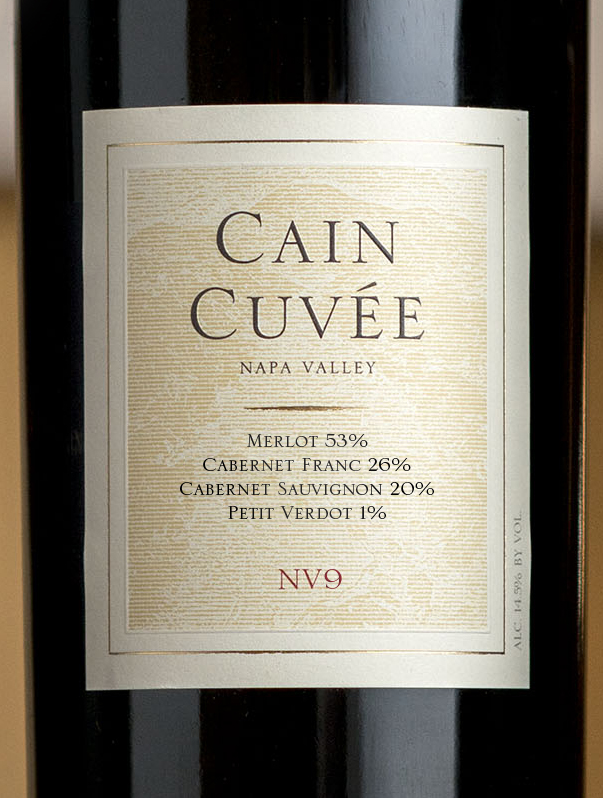
“Our experience of wine includes the warmth and sweetness of alcohol, and, of course, it is intoxicating ... There is no doubt that although there can be too much of a good thing, alcohol is intrinsic to wine; it is surely the ‘spirit’ and inspiration of wine.”
—Chris Howell
“Should ‘alcohol bombs’ be defused?,” Atlanta Journal-Constitution, January 2014:
Napa Valley winemaker Chris Howell does not make “alcohol bombs,” the derogatory term for alcoholic, highly extracted California wines. The cabernet sauvignon blends he makes for Cain Vineyard and Winery tread delicately on your palate and are typically sub-14 percent. You would think this would make him an ally to the Holy Anti-High Alcohol Alliance (HA-HAA), the loosely aligned and decidedly pious group of wine writers, sommeliers and winemakers who would ban 15 percent-alcohol wines.
The philosophic Howell finds it merely curious that there are wine writers who won’t mention high-alcohol wines, sommeliers who won’t list high-alcohol wines and winemakers engaged in campaigns to tone down alcohol levels. Howell sees all wines as an array, with high-, low- and medium-alcohol wines having their place in the spectrum.
“Without alcohol, wine would not be wine,” Howell says. “Alcohol is an essential element in the structure of wine that carries the perfume and holds everything in solution. Our experience of wine includes the warmth and sweetness of alcohol, and, of course, it is intoxicating … There is no doubt that although there can be too much of a good thing, alcohol is intrinsic to wine; it is surely the “Spirit” and inspiration of wine.”
Howell rationalizes why alcohol bombs often receive high scores. (Howell does not submit wines for review, although he made an exception for the purposes of this column. It is not because of unfair or low scores for his wines; it is because scoring a wine seems myopic to him.)
Howell recently recounted in a letter part of our July discussion of alcohol’s role in wine and high review scores:
“People are reduced to relying on a score in order to determine if a wine is good—this includes the wine merchants and the sommeliers. Sadly, they are not only misleading themselves, they are misleading their customers. In the very attempt to avoid being duped, they are led into a trap of deception itself. Most of the wine market is implicated, and it’s difficult to get out of the trap that we have created for ourselves. Few are even willing to acknowledge the problem.
“There are wines made for drinking by themselves and then there are those made to accompany and enhance a meal. There is no doubt that the wines that make the strongest first impression usually receive the highest praise. These will be the biggest, sweetest, fattest, richest wines. In the context of a comparative tasting, they overwhelm wines of lightness and freshness, and they may be judged superior and might even be preferable to drink on their own—at least at first—in the way that we drink Port, outside of a meal, more as a cocktail or an after-dinner drink.”
Cain wines (Cain Cuvée, Cain Concept and its iconic Cain Five) are interesting by themselves, but are superb with food. Howell actually sees a benefit for food-friendly wines from alcohol bombs.
“To appreciate (a food-friendly) wine, some people need to have first gone through their phase of ‘Big Wine,’ ” Howell says. “Others, who never did appreciate the big wines, naturally gravitate to wines with a lighter touch, and take delight in exploring a complex and diverse world that transcends scores.”
(Not that he asked, but out of respect to Howell’s philosophy, I offer no score on his Bordeaux blend, Cain Cuvée.)
By Gil Kulers is a sommelier and maitre d’ for an Atlanta country club. You can reach him at [email protected].
Caine Cuvée, NV 9, Napa Valley
$34
Plentiful aromas of red berry fruit, black licorice and cola with a pleasant floral quality. Similar characteristics on the palate with notes of cedar, cigar box, cinnamon and clove.
Note: Wines are rated on a scale ranging up from Thumbs Down, One Thumb Mostly Up, One Thumb Up, Two Thumbs Up, Two Thumbs Way Up and Golden Thumb Award. Prices are suggested retail prices as provided by the winery, one of its agents, a local distributor or retailer.

